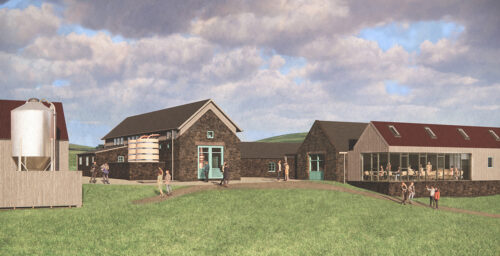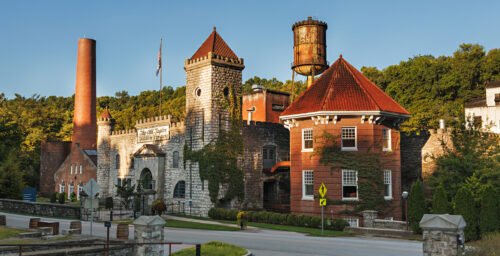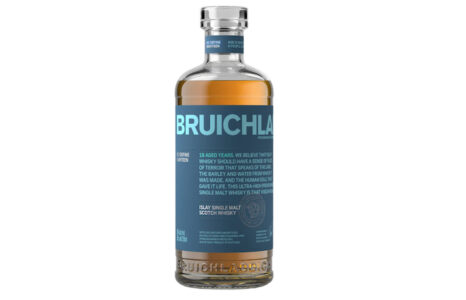Editor’s Note: This guest post comes to us from Josh of the popular bourbon blog Red, White & Bourbon. It is a rebuttal to the recent post Journeyman Distillery’s Nick Yoder let us republish from his distillery’s blog.
Whiskey age statements garner a lot of attention but don’t always provide an accurate indication of quality. If you’ve chased some of the high-aged and high-priced bourbons and ryes that have come out over the last three to four years, you have probably discovered this for yourself, and this is one of the points that Journeyman Distillery’s Nick Yoder attempted to make in a guest blog post titled, “Whiskey Age: It Is Just a Number Folks” on whiskeywash.com. At times I agreed with some of the points Nick made regarding assumptions we all make about the value of whiskies based on age, but other times I wanted to pull my hair out. Especially every time he brought up Pappy Van Winkle.
It seems like every time someone wants to attract attention to an uninteresting topic, they drag Pappy Van Winkle into it. Some people think Pappy is an easy target now that people are getting burned out, and when talking about the secondary market prices, the length of the lines to buy a bottle, and the incessant referencing of Pappy Van Winkle when no one is talking about Pappy Van Winkle, you would be right. Pappy is the worst in all of those regards. The thing is, the whiskey is good, even if the hype distracts from that fact, so when someone compares an enjoyable bourbon to Pappy, or an overhyped brand to Pappy, or an overpriced bottle to Pappy, they are being a no-good hipster, but at least they aren’t being irrational. You go too far when you try and say a 6 month old small barrel craft is as good as Pappy because it scored higher in the “Up to 5 Year” category of a competition than Pappy did in the “11+ Year” category of the competition.
You really jump off the deep end when you claim that the only reason your craft product isn’t as chased as Pappy Van Winkle is because your product is produced in greater supply, as Nick did in the comment section after his post. He says, and I quote, “Pappy is only expensive because the supply is so small, not because it is the most amazing bourbon in the world.”
The Van Winkle Line produces roughly 7,500 3 bottle cases per year. That is 22,500 bottles. I dare any craft producer that agrees with Nick’s assessment to produce a product on that scale then show me a restaurant that hosts a tasting built around it, or show me a Facebook group that was created to talk about it, or a famous chef that stockpiles it, or a TV show that writes it into the story, or a line around the corner on the day you release it, or a single damn whiskey bar that lists a 1.5 ounce pour of your craft whiskey for the total retail price of an entire bottle and sells out after 90 days. If supply, not demand, created this for Pappy, then we as whiskey drinkers are the dumbest assholes around (debatable) and craft whiskey producers either hate money or are unfathomably lazy because supply is your job. Bottle less of your product and buy a bigger safe for all of your money.
I’ve been holding that in for a few years now, but Nick’s main argument that age statements are nothing more than marketing is also flawed, especially in reference to small barrel whiskies.
First, to his point, age statements on traditional whiskies can cut both ways. While I still morn the lost 8 year age statement from Wild Turkey 101, there are a number of recently released super-aged whiskies that would have probably been dumped earlier at more opportune times if not for the fact that higher age statements allow for higher price tags. Without their age statements, the Orphan Barrels, Jefferson’s 21, 25 and 30, and Elijah Craig 20 through 23 (among others) would have been unmarketable and offensive at their respective asking prices. Even with the age statements, many still felt disappointed. But this particular problem with age statements really only exists when a barrel ages beyond the consensus “sweet spot” of 8 to 12 years. Any age statement under this range serves a huge purpose when anticipating quality and value, and only someone that makes craft whiskey would assert differently.
Like many young distilling operations, Nick’s Journeyman Distillery uses small barrels to age their whiskey. Their products go from the still to the shelf in as little as 6 months and this segment usually sell for anywhere from $35 to $55. That may seem insanely young if you’ve tasted 2 or 4 year old products aged in 53 gallon barrels, but small barrels mature much differently than 53 gallon barrels. Not faster. Just differently.
The differences come from how much oak is available for each measure of whiskey in a 5 gallon barrel compared to a 53 gallon barrel. A traditional barrel has 91cm² of oak for every liter of whiskey, represented as 91cm²/L, while a 5 gallon barrel, like what Journeyman uses for their Silver Cross whiskey, has more than double the available oak with a ratio of 198cm²/L. This means that with every maturation cycle (typically defined as 24 hours), there is twice as much whiskey interacting with wood in a 5 gallon barrel than in a 53 gallon barrel. This will make a 6 month to 1 year old small barrel whiskey taste better than a full size barrel of the same age, but small barrels also presents a lot of their own set of problems.
Small barrels evaporate faster which can create over-oxygenation. Some small barrel coopers use thin staves, which dramatically limits the number and variety of flavor compounds that are created during toasting and charring, and therefor limits the available flavor profiles to small barrel products. Most importantly, the odd oak to whiskey ratio also presents a problem in that so much virgin charred oak is getting pulled into such a small amount of whiskey that you risk too much of that profile at around the 1 year mark, or even earlier. You do get a lot of basic wood early on and that helps add character, but in a traditional barrel that ages for a decade, the oak decomposes through oxygenation and hydrolysis, which is the only way complex compounds that give flavors like dark fruits, herbs, tobacco and rose are created. When you dump your barrel at such a young age, no matter the size, the oak is only going to give the whiskey a basic vanilla, dusty lumber, apples and char notes, plus you are dumping your product well before crucial reactions like esterification, filtration, and the chemical degradation of high and low boiling distillation products has a chance to truly refine the spirit.
When all of these process take place together, it is what refines raw grain distillate to delicious American whiskey. What age statements on traditionally aged whiskies tell us is how long these processes acted on the whiskey to make it better, similar to how employers gauge the employability of someone with a 2 year associate’s degree versus a 4 year bachelor’s or a 6 to 8 year master’s or doctorate. Because of how small barrels age I don’t think it is fair to look at the age statements of small barrel products through the same lens as traditional products, but it is also pretty ridiculous to discount age statements as a misleading marketing tactic while being equally misleading about how small barrels age whiskey and what their potential is.
So while a 6 month age statement on a small barrel product may tell you that product was aged to its full potential, and it may be unfair to compare that age statement to age statements on traditional whiskies, it is also irrefutable that there is a huge, gaping, unbridgeable gap between the potential of small barrels (and other quick-aged whiskies) and the potential of traditional barrels. I believe small barrel whiskies can be good and I frequent a few small barrel brands myself, but the best small barrel whiskey is still a long stretch from a Straight Kentucky Bourbon with an age statement in the sweet spot, and not even the same species as the best high-age whiskies on the market. Saying otherwise would be the fastest way to implode the craft market because after you convince someone to buy your whiskey, they drink it.











